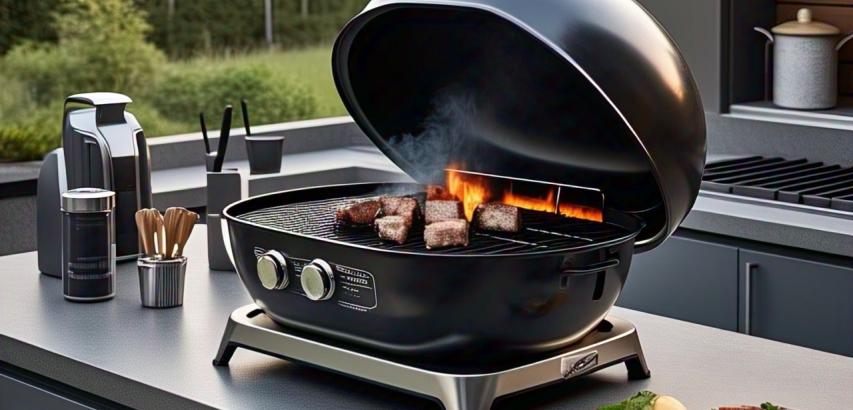The smokeless charcoal grill is a modern innovation transforming backyard barbecues, camping trips, and urban balconies by combining the authentic flavor of charcoal grilling with minimal smoke emission. Designed for eco-conscious foodies and convenience seekers, this grill type addresses the classic drawbacks of traditional charcoal cooking—excessive smoke, ash management, and environmental impact—while retaining the rich, smoky taste that gas or electric grills struggle to replicate.
Key Features and Technology
Advanced Airflow Design:
Utilizes dual-ventilation systems, often with bottom vents and strategically placed airflow channels, to promote efficient combustion. This reduces incomplete burning, a primary cause of smoke.
Some models feature turbocharged fans or convection technology to accelerate heat circulation.
High-Efficiency Charcoal:
Optimized for low-smoke fuels like coconut shell charcoal, bamboo charcoal, or compressed lump charcoal, which burn hotter and cleaner than traditional briquettes.
Smoke-Reduction Mechanisms:
Secondary Combustion: Re-burns smoke particles in a secondary chamber, converting them into heat and carbon dioxide.
Heat Shields and Drip Pans: Minimize flare-ups from grease, which are a major source of smoke.
Portable and Compact:
Many smokeless grills are lightweight, with foldable legs or modular designs ideal for camping, picnics, or small patios.
Easy Ash Management:
Removable ash catchers or trays simplify cleanup, maintaining consistent airflow and reducing mess.
Target Audience
Urban Grillers: Apartment dwellers with limited outdoor space who want to grill without disturbing neighbors.
Eco-Conscious Cooks: Individuals prioritizing reduced carbon footprints and cleaner air quality.
Flavor Purists: BBQ enthusiasts unwilling to compromise on charcoal’s authentic taste but seeking a more pleasant cooking experience.
Adventure Enthusiasts: Campers and tailgaters needing portable, low-smoke solutions.
Benefits
Minimal Smoke, Maximum Flavor: Enjoy the sear and aroma of charcoal-grilled food without the eye-watering smoke.
Faster Preheating: Efficient combustion means quicker readiness for cooking (often in 10–15 minutes).
Eco-Friendly: Lower emissions and sustainable fuel options align with green lifestyles.
Versatility: Suitable for grilling, smoking, and even baking, depending on the model.
Safer for Health: Reduced smoke means fewer airborne carcinogens and irritants.
Considerations
Cost: Smokeless grills are typically pricier than basic charcoal models, with high-end versions exceeding $300.
Learning Curve: Mastering airflow control and fuel placement is crucial for optimal performance.
Not Completely Smoke-Free: Small amounts of smoke may still occur during ignition or if grease drips onto coals.
Fuel Dependency: Requires specific charcoal types for best results, which may be less accessible than standard briquettes.
Popular Models
BioLite FirePit+: A portable grill with Bluetooth-controlled airflow and a built-in fan for smokeless combustion.
Kamado Joe Classic: Ceramic design with superior heat retention and adjustable vents for smoke control.
Weber Smokey Joe Premium: Compact, affordable, and optimized for efficient airflow.
The smokeless charcoal grill bridges the gap between tradition and innovation, offering a sustainable, user-friendly way to savor the unmatched flavor of charcoal-cooked meals. While it may not eliminate smoke entirely, its smart engineering drastically reduces nuisances, making grilling more enjoyable in smoke-sensitive environments. For those willing to invest in a cleaner, greener cooking experience—without sacrificing the primal joy of charcoal flames—this grill is a worthy upgrade to any outdoor culinary arsenal.
 |  |  |
